When it came to acquiring properties, Henry VIII didn’t need the help of young Alex at Foxtons. He’d simply accuse the owner of the house of treason, lop off his head, and then go and pick up the keys.
Such was the fate of Edward Stafford, a man whose wealth almost rivalled Henry’s and who built Thornbury Castle in the 1500s. After Stafford’s eviction, Henry then stayed there on occasions with Anne Boleyn, who of course met the same fate as Stafford ten months after her last visit.
So for once ‘steeped in history’ isn’t just a cliche. Outside reception you can even see the ‘mounting block’ that an increasingly corpulent King had to use to get up on his horse.
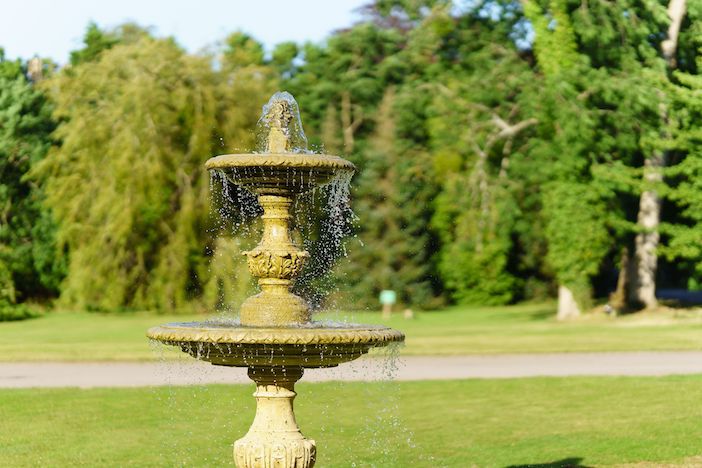
On the way from the car park to the colourful semi-walled courtyard with its cheerfully splashing central fountain, you duck under low arches and glimpse open doors and stone spiral staircases climbing mysteriously to various regions of the house. And it is actually a house, it was created to look like a castle but was never supposed to be one. An early example of Mock Tudor, perhaps.
We climbed one of the spiral staircases, hanging on to the barley twist handrails and puffing slightly, to reach our first floor room. A very big room, but by no means the biggest of the 26 on offer, there are tapestries, a four poster bed, paintings, heavy curtains, thick carpet and a stone fireplace large enough to roast an ox in, although there is also a mini bar with snacks.
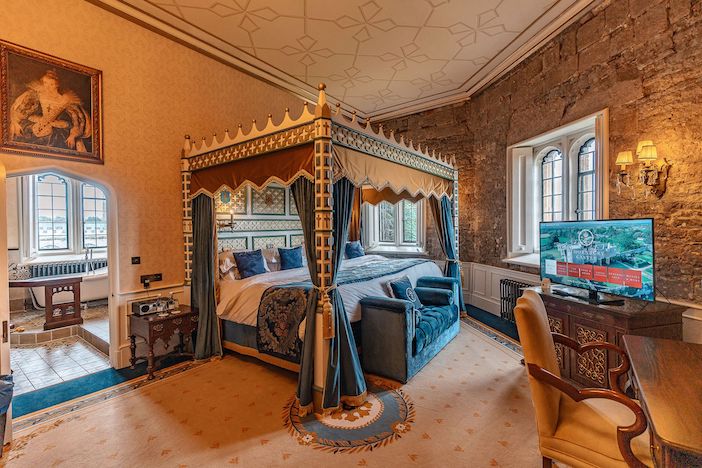
We drank our complimentary flask of sloe gin and then made our way a bit unsteadily, via a succession of elegant lounges, each with heavy furniture, paintings and always another large fireplace, out to the Privy Garden.
No, don’t snigger, privy here actually does mean private; a pretty garden under the oriel windows of Stafford’s old bedroom, it is quite beautiful and looked over by a lovely church. Here, in the late evening sunshine we topped up with gin and tonic, the bar has a large selection of gins, and listened to the traditional country hotel sounds of a table of American tourists recounting their day’s adventures.
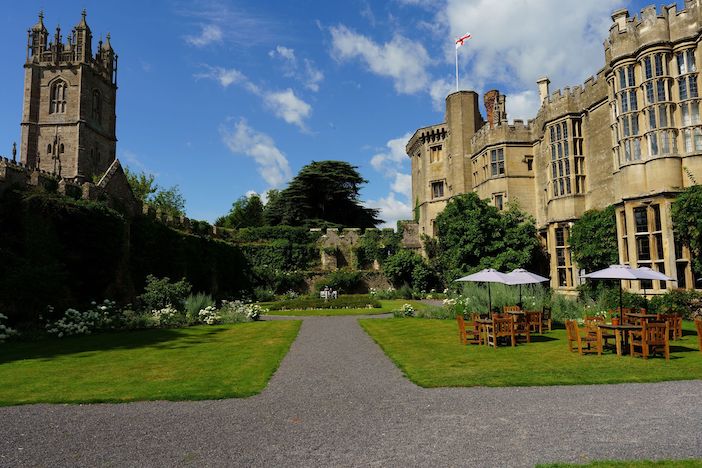
They seemed delighted with everything at the hotel, and rightly so. We left them to go up and shower for dinner, coming back down to a charming ground floor turret room laid out in a rather old fashioned way for Londoners like ourselves, but very much the norm for historic country hotels. Heavy linen napkins, for example, you don’t see those much anymore. Or indeed tablecloths.
This raises the worry that dinner might be a bit staid, a bit predictable but it isn’t. Executive Head Chef, David Williams, has recently retained the hotel’s 3 AA Rosettes with his tasting as well as his a la carte and set menus. Our three course menu of three dish choices for each course came in at £75 per person.
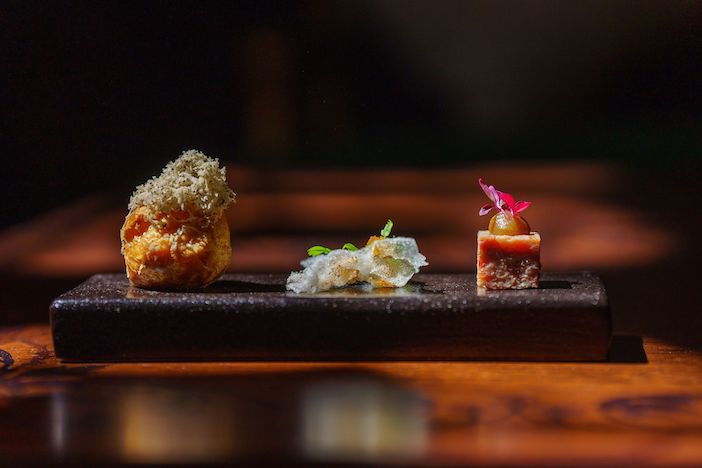
An amuse of frothy avocado is airy and gets the taste buds going for a starter of Pate En Croute with Rare Bread (sic) Pork and their own Piccalilli. Pate en croute is a favourite of mine, I also like our own British Game Pie with its grey egg inside, but this is far superior. Excellent pastry, a thin layer of jelly and well-seasoned pork. The vinegary tang of the crisp pickle is a good foil, while the minimalism on the plate is both attractive and also old skool because I haven’t seen carrots cut into such tiny cubes for a very long time.
My main of British beef, so appropriate, was a gorgeous hunk of perfectly cooked fillet accompanied by a elegant rosti, some bright carrot and tousled spinach, while across the table a potentially confusing mix of hake, salt cod, clams, mussels and shrimp actually came across as well thought through and cohesive. An excellent piece of fish, even on its own, but here cleverly enhanced.
Mango cremeux with Thai basil and coconut ice cream was beautiful to look at and eat, while vanilla and strawberry cheesecake was stylish and refreshing. And so to bed. Next morning, after a breakfast so lavish Henry himself might have thrown in the towel, we went for a much-needed walk.
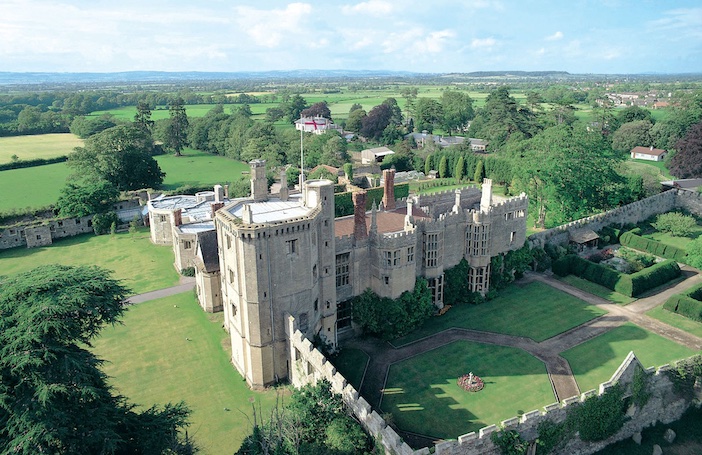
Fifteen acres of land, including manicured lawns and many castle gardens, give out onto rolling countryside. You can play croquet on the lawn or take an archery session. There are regular falconry demonstrations too, which is all very Tudor. We liked the walled kitchen garden, being allotmenteers ourselves, and were secretly pleased to see that their gardener had had a difficult growing year too.
Afternoon tea is served inside the castle’s lounges, as well as in that pretty Privy Garden and looks good. The Castle Treatment Room offers the usual range of services, but there is no spa as of yet.
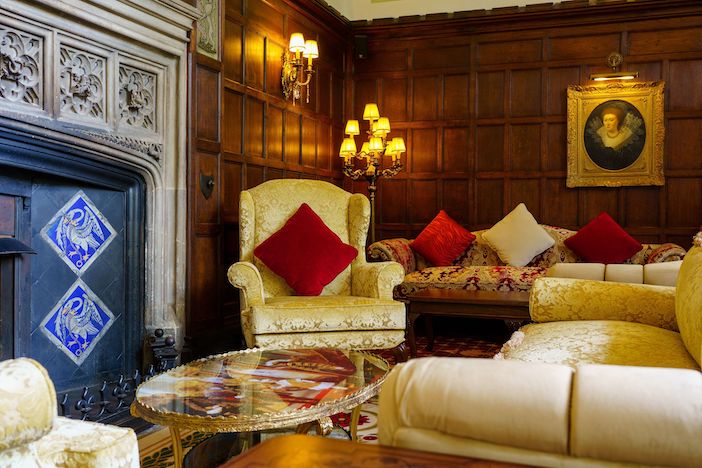
Thornbury Castle is a Relais & Chateaux hotel, so of course it has all the high standards one would expect, as well as friendly staff who bustle about much as the staff of the time might have done, popping out of concealed doorways and always with a cheery greeting.
The hotel is well set up for events and weddings, delivering a gorgeous backdrop for the photos, as well as characterful rooms to seat large numbers of wedding guests in style. Meeting Rooms for corporate retreats are also available, places where Barry from marketing can try to catch his king’s eye favourably and avoid being given the chop in the next round of downsizing.
A luxury retreat close to Bristol and the bridges into Wales, and about three hours drive from London, Thornbury Castle is a right royal retreat.
Bedchamber rates at Thornbury Castle start from £299. For dinner, three courses from the A-la-Carte menu costs £75. For more information, please visit www.thornburycastle.co.uk. In April, Thornbury Castle was awarded 3 AA Rosettes for culinary excellence and 4 Red Stars for the second year running.




